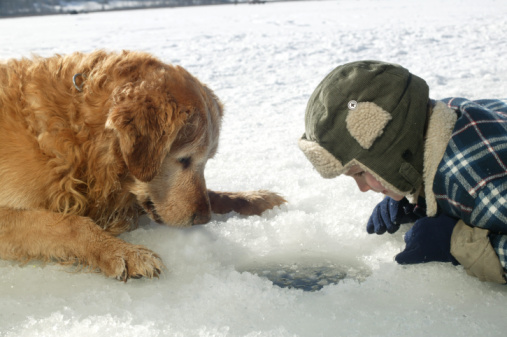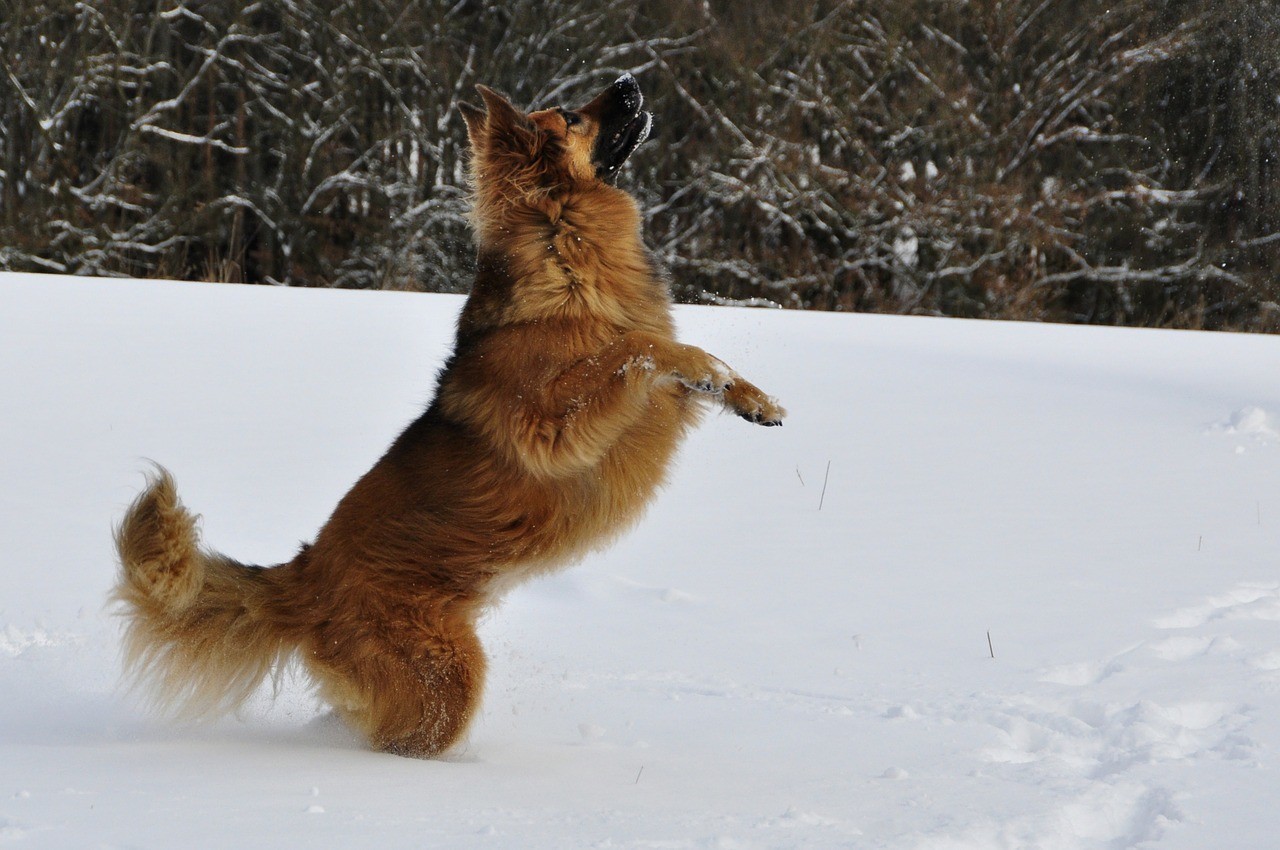
The answer is, unfortunately, yes. Dogs can experience extreme suffering as the result of the pain of frostbite. Making matters worse is the fact it may actually take a couple of days for you to realize the extent of the malady. Taking the time to learn what symptoms to look for may be enough to save your pet from at least some pain and suffering.
[heading style=”2″ color=”#996633″ style_color=”#996633″]Where to Watch for Frostbite on Your Pets[/heading]
The first thing to learn about recognizing frostbite in dogs are the areas of the canine anatomy most at risk. You probably already suspect that the paws are at the top of the list since that is the part of the dog’s body most likely to make long-term contact with snow or ice or just plain cold, hard ground. But would you be surprised to learn that the next most likely parts of a dog to suffer the effects of frostbite are the ears and the tail?
[heading style=”2″ color=”#996633″ style_color=”#996633″]The Caveat – Keep Your Pet Dry![/heading]
The paws, tail and ears are most at risk for frostbite, but as with everything there is a caveat. In the very serious case of frostbite, that caveat is all wet. Meaning that any part of the dog’s body that becomes damp immediately jumps to the head of the at-risk list. A dog that has been playing in a puddle on a cold day may actually be more at risk for frostbite than a dry dog exposed to significantly lower temperatures. This caveat is important to keep in mind for preventing frostbite as well as recognizing symptoms.

[heading style=”2″ color=”#996633″ style_color=”#996633″]The Hair of the Dog[/heading]
That question of whether a dog can suffer frostbite comes with a warning. Dog breeds that thrive in cold weather due to their long thick coats are less susceptible to frostbite than their short-haired or hairless counterparts that enjoy basking in the hot summer sun much, much more. Despite this fact, however, owners of cold-weather dogs need to guard against thinking that their dog is in any way frostbite-proof. Any dog, regardless of breed or coat conditions, is a potential victim of frostbite.
[heading style=”2″ color=”#996633″ style_color=”#996633″]Symptoms of Frostbite[/heading]
Keep in mind that the symptoms of frostbite in your dog may not manifest for more than a day after exposure. Even so, it doesn’t hurt to check those body parts most at risk for frostbite any time your pet has out in the cold. The most immediately obvious visual clue is discoloration of the affected area. Colors to look for are pale shades of gray or blue. If these discolored body parts feel brittle to the touch, that’s a very strong indication of frostbite. Be careful touching a dog you suspect is frostbitten because even the slightest contact is likely to be painful. Additional symptoms include swelling, blisters and, if you have waited too long to check, blackening of the affected areas.
[heading style=”2″ color=”#996633″ style_color=”#996633″]Treatment of Frostbite[/heading]
The first thing to do if your examination occurs outdoors is to get your dog inside a warm area as quickly as possible. Do not try to warm the frostbitten parts of the dog’s body if it is going to take you some time to get him indoors. More harm than good will come from the areas of frostbite refreezing after being warmed.
Once you have gotten the dog indoors to a warm house, you can gently apply a compress soaked in warm–not hot–water. Just press the compress softly against the parts of the dog’s body you suspect may be suffering from frostbite and do not move in a rubbing or massage fashion as this will only aggravate the situation and, most likely, the dog as well. Once you are confident the dog has become comfortably warm, pat any dampness left by the compress dry.
If someone else is home when you arrive with the dog, get them to call a vet while you tend to the dog. If nobody else is available, wait until after you have taken steps to warm up your pet before calling the vet. And then, most importantly, do only what the vet recommends and do not do anything without asking first if it’s safe.
